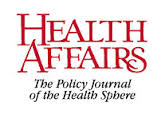New Approach to Helping Patients With Complex Needs
Five foundations have joined forces to pursue new approaches to serving patients with complex medical needs.
The Commonwealth Fund, the John A. Hartford Foundation, the Peterson Center on Healthcare, the Robert Wood Johnson Foundation, and The SCAN Foundation engaged the Institute for Healthcare Improvement to identify promising ways of better serving patients with complex medical needs. Many such patients, the foundations believe, have adequate access to medical care yet struggle to find the coordination needed between medical, behavioral, and social services to stay well and avoid costly hospitalizations.
 The group’s first public product is The Playbook, which it describes as
The group’s first public product is The Playbook, which it describes as
…a dynamic website that highlights the challenges facing adults with complex health and social needs and provides direction on how to meet those needs through a variety of resources that detail care models, policies, and more.
The Playbook offers a variety of resources to caregivers, such as an intensive outpatient care program toolkit, a quick reference to promising care models, recommendations for tailoring complex care management for high-need, high-cost patients, and more.
Serving patients with complex medical problems can be especially challenging for Pennsylvania safety-net hospitals because they often have so many such patients.
Find The Playbook here.



 Further, the study suggests,
Further, the study suggests,
 Earlier this year the chairmen of the Senate Finance Committee and the House Energy and Commerce Committee asked the U.S. Government Accountability Office to answer these and other questions. Now, the GAO has published its answers in a new report titled Key Policy and Data Considerations for Designing a Per Capita Cap on Federal Funding. Find that report
Earlier this year the chairmen of the Senate Finance Committee and the House Energy and Commerce Committee asked the U.S. Government Accountability Office to answer these and other questions. Now, the GAO has published its answers in a new report titled Key Policy and Data Considerations for Designing a Per Capita Cap on Federal Funding. Find that report  In particular, SNAP opposes the manner in which CMS would treat payments from Medicare and third-party payers made on behalf of Medicaid-eligible individuals.
In particular, SNAP opposes the manner in which CMS would treat payments from Medicare and third-party payers made on behalf of Medicaid-eligible individuals.
